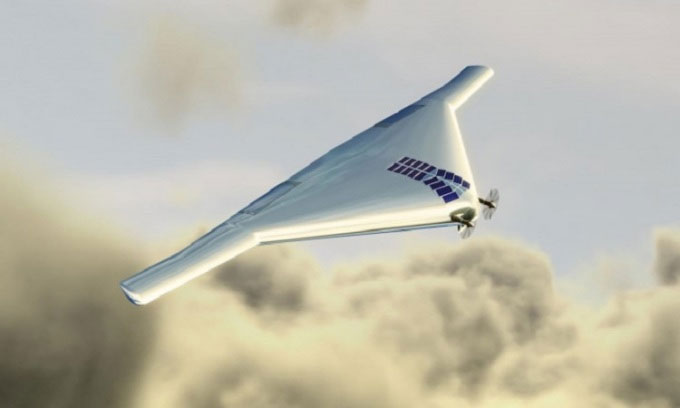The design of lighter-than-air aircraft could facilitate the exploration of the clouds in the atmosphere of Venus in the future and help detect signs of ancient life.
First introduced in 2014 by Northrop Grumman in the United States, the Venus Atmospheric Maneuverability Platform (VAMP) project aims to deploy inflatable aircraft from space to explore the upper atmosphere of Venus. West Virginia University announced on December 9 that their engineers are developing software that will enable the vehicle to autonomously navigate within the atmosphere of Venus.

Northrop Grumman’s inflatable aircraft design. (Photo: Northrop Grumman)
According to the engineering team, the primary goal of the project is to provide software solutions that allow a hybrid robotic aircraft to explore Venus. The software will optimize the flight path while calculating wind speed and solar intensity, enabling the aircraft to remain airborne for as long as possible.
Northrop Grumman’s initial design features an inflatable aircraft that is light enough to fly with minimal energy while being stable enough to navigate in the strong winds of Venus’s atmosphere. Recent proposals include NASA’s High Altitude Venus Operational Concept (HAVOC), which would facilitate crewed missions to explore Venus’s clouds using large solar-powered balloons.
Many scientists believe that Venus is a more suitable target than Mars for human exploration. Its orbital cycle brings it closer to Earth for most of the year. Although the planet’s scorching surface is inhospitable to life, a vehicle floating in the clouds of Venus would experience temperatures similar to those on Earth.
If the VAMP spacecraft reaches Venus, it will gather data and provide valuable insights for any future exploration missions. Recent studies indicate that Venus has undergone climate changes that transformed its once Earth-like surface into an uninhabitable hell. Information collected by future missions could enhance our understanding of Earth’s climate.


















































